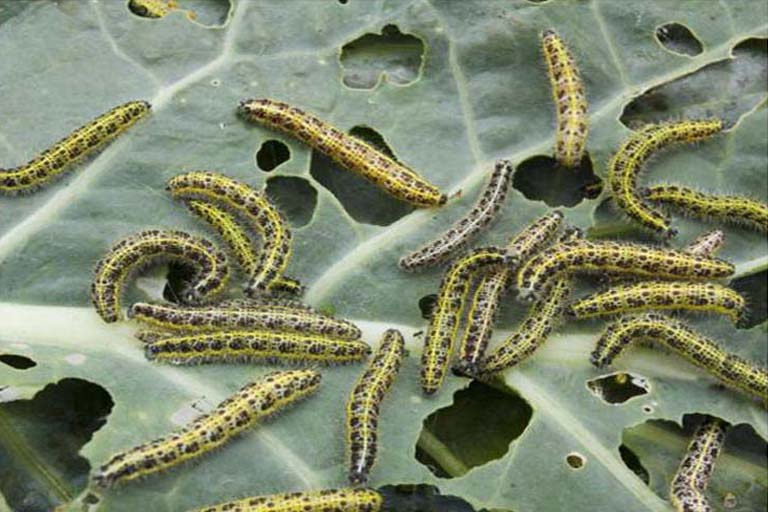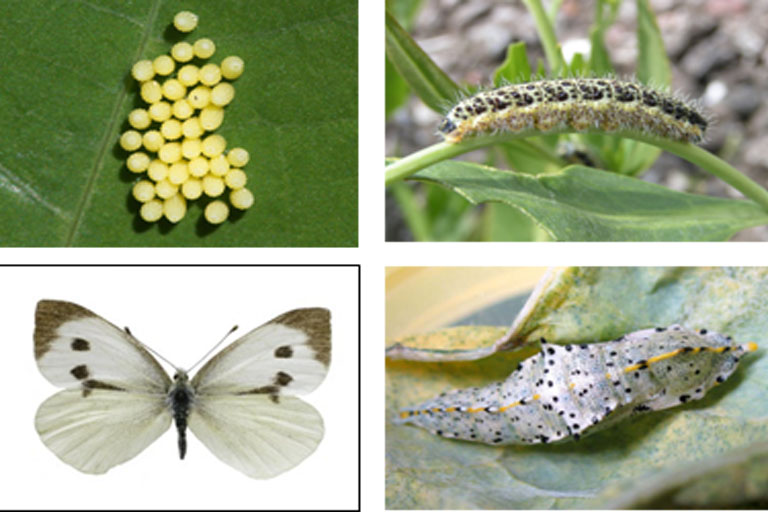Do you have a little garden in your backyard and spend most of your time taking care of it? I am sure you would agree that it is the most rewarding feeling to grow your own vegetables and prepare healthy dishes to feed your family and children. But, what if while taking a stroll in your garden and watering your veggies, you notice those small green caterpillars on the underside of the leaves already feeding on your salad? These green caterpillars are cabbage worms. These worms are disastrous for the brassica crops, and you must get rid of them immediately to save your harvest!
Most people place fences around the garden’s boundary and many scarecrows at every foot’s distance to keep away rabbits, birds, and other animals but do nothing to safeguard their crops from these worms. If you are looking for a detailed note of how you can recognize these worms and protect your garden from these little monsters, read till the very end and get answers to all your queries.
What Are Cabbage Worms?
Cabbage worms were first found in some parts of Europe. They are believed to have come to Massachusetts by 1870 and then spread rapidly to the other parts of the United States. Commonly referred to as the “imported cabbageworm”, this small green colored velvety caterpillar is the larval of the cabbage white butterfly. The cabbage butterfly is white and has three or four black spots on each of its off-white wings.
You will usually find these worms on the undersides of brassica or the cabbage-family plants. These little green worms can ruin your plants completely in a few days. The white butterflies are scientifically referred to as “Pieris Rapae” or “Pieris Brassicae”; they are also called “small white” or “small cabbage white” in general.
Plants Affected by Cabbage Worms
These worms not only target the cabbage leaves, but feed on most members of the brassica and mustard family. They enjoy plants with natural glucosides and affect broccoli, cauliflower, kale, Brussels sprouts, collards, radishes, mustard greens, and turnips. They are occasionally also found on other plants with glucosinolates like tomatoes, spinach, and lettuce.
How to Identify Cabbage Worms?
The worms in your garden can be a serious threat to your harvest. There are some obvious signs that indicate the presence of these worms. You should look out for the following signs:
Appearance of Cabbage Worms
Not all caterpillars are cabbage worms, and a few of them are good for your garden. It is best to know how to spot the cabbage white butterflies and cabbage worms to take the necessary steps to get rid of them and prevent any further damage to the brassicas of your garden.
Cabbage worms are velvety green larvae that grow up to 1 ¼ inch long. They have grayish black or pale-yellow stripes. These have five sets of pro-legs that are prominently visible and short fine hair all over their body.
It is very easy for you to confuse the cabbage loopers for cabbage worms. Cabbage loopers are yellow-green caterpillars that do not have middle legs and hence raise and lower their bodies while moving. They are harmless to your plants, and their presence should not be a cause of worry for you.
The cabbage butterfly is a beautiful white colored butterfly with off-white wings. It has few black spots on each of its wings and a wingspan of 30-47mm. These butterflies are often seen fluttering in the garden from early spring to late fall, and they lay eggs on the undersides of the leaves of the cabbage-family plants.
Life Cycle of Cabbage Worms
The cabbage butterfly feeds on flower nectar and lays up to 200 eggs on the plants of the brassicas family. In no more than 5-7 days (time depending upon temperature), these pale yellow colored eggs hatch little green caterpillars that feed themselves on the kale, cabbage, broccoli and cauliflower leaves.
These cabbage worms continue to feed and eat away the cabbage-family leaves for the next 2-3 weeks, while building up the energy to pupate on lower leaf surfaces or low-lying garden objects. The cabbage worm then builds a chrysalis in the fall and hatches as the cabbage white butterfly in spring during the winter.
The white butterflies have three to six overlapping generations in one season and may sometimes have as many as eight generations in warmer areas around the world.
Getting Rid of Cabbage Worms
If you happen to see the white cabbage butterfly in your garden, you must take immediate action to cease further infestations. There are many chemical based pesticides available on the market that can easily kill all cabbage worms. But, we encourage you to try the organic methods and continue enjoying the clean and healthy veggies from your garden.
Ways to Prevent Cabbage Worms
[amazon box= “B002BP12LI,B018A8ROXO,B0765WM8SX” template=”table”]
Once you have eliminated all cabbage worms from your garden, it’s time to take appropriate measures and prevent them from coming back. Prevention is always better than cure, and we have some simple tips for you to keep the hungry caterpillars away from your plants.
Crop Rotation
Plow the Soil
Grow Pest Repelling Plants
Plant Flowering Plants
Row Covers
Use Nylon Stocking
Conclusion
If you do not see any eggs, cabbage worms or damage to your plant leaves yet, but the white butterflies have already occupied your garden, be cautious as they shall soon lay eggs and spoil your plants. The green caterpillars and pale-yellow eggs are often hard to find with a naked eye as they blend well with the leaves of the cabbage and other plants from the brassica family. Always cross check, on the undersides of the leaves, for anything suspicious and take necessary precautions.
[amazon box= “B01G621ZIG,B00U01X1T6,B014ZNA2U0″ template=”table”]
If your garden is heavily infected with cabbage worms, and it’s time to harvest, do not worry as these caterpillars pose no danger. Even if you shop for your veggies from a local vendor and find cabbage worms in it, there is nothing to worry about. The presence of these worms confirms that the veggies are from an organic farm, and they were not injected with any chemicals. You can just wash off the veggies under a running tap and cook them well before consuming. They are not poisonous, and there is no health risk if you accidentally consume one. There may be a slight difference in the taste, but you can be sure that they won’t make you sick. These worms are nothing to fear because they do not cause any harm to you or the environment. However, it never hurts to be cautious, and keep a check on your plants. Be aware and take timely action to make your garden look healthy and green.



Leave a Reply